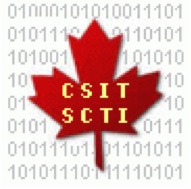Zhiguo Ding
Lancaster University
Tutorial 1: Non-Orthogonal Multiple Access
Abstract: Multiple access in 5G mobile networks is an emerging research topic, since it is key for the next generation network to keep pace with the exponential growth of mobile data and multimedia traffic. Non-orthogonal multiple access (NOMA) has recently received considerable attention as a promising candidate for 5G multiple access. The key idea of NOMA is to exploit the power domain for multiple access, which means multiple users can be served concurrently at the same time, frequency, and spreading code. Instead of using water-filling power allocation strategies, NOMA allocates more power to the users with poorer channel conditions, with the aim to facilitate a balanced tradeoff between system throughput and user fairness. Recent industrial demonstrations show that the use of NOMA can significantly improve the spectral efficiency of mobile networks. Because of such a superior performance, NOMA has been also recently proposed for downlink scenarios in 3rd generation partnership project long-term evolution (3GPP-LTE) systems, and the considering technique was termed multiuser superposition transmission (MUST). In this tutorial, we will provide a progress review for NOMA, including an information theoretic perspective of NOMA, the interaction between cognitive radio and NOMA, the design of MIMO and cooperative NOMA, and the impact of practical constraints, such as imperfect channel state information and limited feedback, on the performance of NOMA.
Speaker’s short biography
Zhiguo Ding received his B.Eng in Electrical Engineering from the Beijing University of Posts and Telecommunications in 2000, and the Ph.D. degree in Electrical Engineering from Imperial College London in 2005. From Jul. 2005 to Aug. 2014, he was working in Queen’s University Belfast, Imperial College and Newcastle University. Since Sept. 2014, he has been with Lancaster University as a Chair Professor in Signal Processing. From Sept. 2012 to Sept. 2016, he has also been an academic visitor in Princeton University.
Dr Ding’s research interests are 5G networks, game theory, cooperative and energy harvesting networks and statistical signal processing. He is serving as an Editor for IEEE Transactions on Communications, IEEE Transactions on Vehicular Technology, IEEE Wireless Communication Letters, IEEE Communication Letters, and Journal of Wireless Communications and Mobile Computing. He was the TPC Co-Chair for the 6th IET International Conference on Wireless, Mobile & Multimedia Networks (ICWMMN2015), Symposium Chair for International Conference on Computing, Networking and Communications. (ICNC 2016), and the 25th Wireless and Optical Communication Conference (WOCC), and Co-Chair of WCNC-2013 Workshop on New Advances for Physical Layer Network Coding. He received the best paper award in IET Comm. Conf. on Wireless, Mobile and Computing, 2009 and the 2015 International Conference on Wireless Communications and Signal Processing (WCSP 2015), IEEE Communication Letter Exemplary Reviewer 2012, and the EU Marie Curie Fellowship 2012-2014.
Wei Yu
University of Toronto
Tutorial 2: Cloud Radio Access Networks
Abstract: Cloud radio access network (C-RAN) is an emerging wireless cellullar architecture, in which the base-stations (BSs) take advantage of high-capacity fronthaul links to upload signal processing and computation to a cloud-computing based central processor. The C-RAN architecture offers an enabling platform for the centralized joint encoding and joint decoding of user messages and a capability for intercell interference mitigation across a cluster of BSs. In this tutorial, we address both the information theory and signal processing challenges in C-RAN design. The tutorial begins by presenting capacity analysis and optimization technique for C-RAN, specifically accounting the finite capacity constraints of the fronthaul links. In the uplink, we focus on the compression scheme in which the BSs quantize the received signals and send the quantized signals to the central processor. We show a strategy based on Wyner-Ziv coding is approximately sum-capacity achieving. In the downlink, we analyze both the message-sharing strategy and compression-based strategy for this setting, and show how compressive sensing and weighted minimum mean-squared error (WMMSE) techniques can be used to solve a network utility maximization problem involving joint user scheduling, BS clustering and beamforming. The tutorial further addresses system-level analysis of the C-RAN using tools from stochastic geometry with an aim of quantifying the capacity benefit of cooperative communication as a function of the cluster size.
Speaker’s short biography
Wei Yu (S’97-M’02-SM’08-F’14) received the B.A.Sc. degree in Computer Engineering and Mathematics from the University of Waterloo, Waterloo, Ontario, Canada in 1997 and M.S. and Ph.D. degrees in Electrical Engineering from Stanford University, Stanford, CA, in 1998 and 2002, respectively. Since 2002, he has been with the Electrical and Computer Engineering Department at the University of Toronto, Toronto, Ontario, Canada, where he is now Professor and holds a Canada Research Chair (Tier 1) in Information Theory and Wireless Communications. His main research interests include information theory, optimization, wireless communications and broadband access networks.
Prof. Wei Yu currently serves on the IEEE Information Theory Society Board of Governors (2015-17). He is an IEEE Communications Society Distinguished Lecturer (2015-16). He served as an Associate Editor for IEEE Transactions on Information Theory (2010-2013), as an Editor for IEEE Transactions on Communications (2009-2011), as an Editor for IEEE Transactions on Wireless Communications (2004-2007), and as a Guest Editor for a number of special issues for the IEEE Journal on Selected Areas in Communications and the EURASIP Journal on Applied Signal Processing. He was a Technical Program co-chair of the IEEE Communication Theory Workshop in 2014, and a Technical Program Committee co-chair of the Communication Theory Symposium at the IEEE International Conference on Communications (ICC) in 2012. He was a member of the Signal Processing for Communications and Networking Technical Committee of the IEEE Signal Processing Society (2008-2013). Prof. Wei Yu received a Steacie Memorial Fellowship in 2015, an IEEE Communications Society Best Tutorial Paper Award in 2015, an IEEE ICC Best Paper Award in 2013, an IEEE Signal Processing Society Best Paper Award in 2008, the McCharles Prize for Early Career Research Distinction in 2008, the Early Career Teaching Award from the Faculty of Applied Science and Engineering, University of Toronto in 2007, and an Early Researcher Award from Ontario in 2006. He is recognized as a Highly Cited Researcher by Thomson Reuters.
Prof. Wei Yu is a Fellow of IEEE. He is a registered Professional Engineer in Ontario.
Ali Afana Salama S. Ikki Raed Mesleh
Lakehead University Lakehead University German Jordanian University
Tutorial 3: Quadrature Spatial Modulation
Abstract: Wireless technologies have proliferated every aspect of human activity, playing an integral role in national infrastructures and enabling pervasive mobile computing, e-commerce, multimedia communications, health monitoring, and others. To this end, several maturing technologies have been emerged in recent years to enhance the capacity of wireless networks, particularly cellular networks. Quadrature Spatial modulation (QSM) has been recently proposed as a promising multiple-input multiple-output (MIMO) technique that utilizes the spatial information in a novel fashion. At each time instance, only a single transmit antenna is activated among the set of existing transmit antennas and the activated antenna index is implicitly used to convey information beside the well-known M-ary modulation schemes. As compared to other conventional MIMO techniques, QSM is shown to have several advantages among of which are, complete avoidance of inter-channel interference (ICI), relaxed inter-antenna synchronization requirements, low receiver complexity, use of a single RF chain at the transmitter, and enhanced error performance with moderate number of transmit antennas. It has been shown that QSM increases the spectral efficiency of conventional spatial modulation (SM) system while retaining all SM inherent advantages. This tutorial will cover the basic concepts as well as the benefits, challenges and complexity issues of QSM in order to gain a deeper insight into the operation, performance and feasibility of QSM in practice.
Speakers’ short biographies
Ali Afana received the B.Sc. degree in electrical engineering from the Islamic University of Gaza, Palestine, in 2006; the M.Sc. degree (with distinction) in communications engineering from Birmingham University, Birmingham, U.K., in 2009; and the Ph.D. degree in electrical engineering from Concordia University, Montréal, QC, Canada, in 2014. He was a Postdoctoral Research Fellow with the Department of Electrical Engineering, Memorial University, St. John’s, NL, Canada from 2014-2015. He is currently a Postdoctoral Research Fellow with the Department of Electrical Engineering, Lakehead University, Thunder Bay, ON, Canada. He is an author of 20 IEEE journal and conference papers. His research interests span different topics in wireless communications, including signal processing for wireless communications, performance analysis of cooperative relaying in cognitive radio networks, spatial modulation, and physical-layer security for massive multiple-input–multiple-output systems. Dr. Afana received an IEEE Communications Letters exemplary reviewer certificates for 2014.
Salama S. Ikki received the B.S. degree from Al-Isra University, Amman, Jordan, in 1996, the M.Sc. degree from The Arab Academy for Science and Technology and Maritime Transport, Alexandria, Egypt, in 2002, and the Ph.D. degree from Memorial University, St. Johns, NL, Canada, in 2009, all in electrical engineering. From February 2009 to February 2010, he was a Postdoctoral Researcher with the University Of Waterloo, ON, Canada. From February 2010 to December 2012, he was a Research Assistant with INRS, University of Quebec, Montreal, QC, Canada. He is currently an Assistant Professor of wireless communications with Lakehead University, Thunder Bay, ON, Canada. He is the author of 100 journal and conference papers and has more than 2000 citations and an H-index of 23. His research interests include cooperative networks, multiple-input multiple-output, spatial modulation, and wireless sensor networks. Dr. Ikki has served as a Technical Program Committee member for various conferences, including IEEE International Conference on Communications, IEEE Global Communications Conference, IEEE Wireless Communications and Networking Conference, IEEE Spring/Fall Vehicular Technology Conference, and IEEE International Symposium on Personal, Indoor and Mobile Communications. He currently serves on the Editorial Board of IEEE COMMUNICATIONS LETTERS and Institution of Engineering and Technology Communications. He received a Best Paper Award for his paper published in the EURASIP Journal on Advanced Signal Processing. Dr. Ikki also received an IEEE Communications Letters, IEEE Wireless Communications Letters and IEEE Transactions on Vehicular Technology exemplary reviewer certificates for 2012, 2012 and 2014, respectively.
Raed Mesleh received his Ph.D. from Jacobs University, Bremen, Germany in 2007. From February 2016, he joined the Communications Engineering Department as an associate professor at the School of Computer Engineering and Information Technology, German Jordanian University, Amman, Jordan. From October 2010 to January 2016, he was with University of Tabuk in Saudi Arabia as an associate professor in electrical engineering department and the Director of Research Excellence Prizing unit and Intellectual Property Unit. From 2007 to 2010 he was with the School of Electrical Engineering and Computer Science, Jacobs University, Bremen, Germany where he worked as a postdoctoral fellow. He was visiting scholar at several well-established organizations such as, Boston University, The University of Edinburgh and Herriot-Watt University. His main research interests are in wireless communication and optical wireless communication with particular focus on MIMO techniques and MIMO cooperative communication. He is an inventor and co-inventor of seven patents, three of them are already granted, and published more than 100 papers at top-tier journals and international conferences. His citations exceed 3000.









